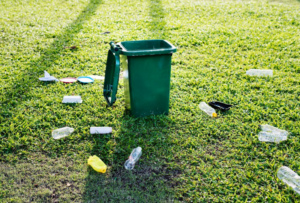Five Methods for Waste Disposal

Industrialized nations are facing a problem with how to dispose of waste safely. Toxic and non-biodegradable types of waste can cause damage to the environment, and to human health, that can’t be undone.
But while waste disposal has been a problem for many decades now, the biggest concern is that there is such a large amount of waste being tossed out all of the time because of population growth. Improvements have been made for waste disposal methods, but they’re still not enough. We need to find new and harmless methods for waste disposal and put those methods into action. These are some of the waste disposal methods we currently have in place.
Preventing and Reducing Waste Generation
Throwing away new and even unnecessary items is the primary source of waste formation we have. Because our population is on the rise, it’s more important than ever to use secondhand products or use the ones we already have. If we don’t, we will find ourselves suffering the negative impact of toxic wastes.
Recycling
Recycling is great because it converts waste into a new type of usable product through the power of industrial processing. Commonly recycled materials include aluminum, glass, paper, and plastic. It’s good for the health of the planet to reuse waste instead of throw it into landfills. The one drawback is that processing technologies are on the pricier side.
Incineration
Incineration is a waste disposal method that incinerates waste and turns it into base components. Gases and ash are the by-products of this method. Pollution happens as a result of varied degrees which are dependent on the type of waste that was combusted and the type of incinerator that was used. It’s relatively cheap to incinerate waste, and it can reduce the volume of waste by around 90%.
On top of that, the ash that is formed is rich in nutrients, and it can be used to facilitate hydroponic solutions. This waste disposal method is great for removing toxic waste. If that wasn’t enough, the energy that is made is useful for cooking and heating, as well as fueling turbines. You have to be careful when incinerating waste, though. You don’t want to have any contaminants leak out of incinerator lines.
Composting
Composting is a method of waste disposal that decomposes organic waste by letting the waste stay in a pit for an extended period of time. After decomposition, the compost can be used as plant manure. However, it does take time to decompose waste, and it uses a lot of land.
Sanitary Landfill
This waste disposal method involves throwing waste into a landfill. Landfills have protective lining around them, which serves as a barricade between the landfill and the groundwater, which prevents toxins from getting into the water. Waste layers get compacted and coated with a type of earthly layer. Non-porous soil is ideal for this layer because it lowers the risk of accidentally leaking toxic chemicals. Landfills need to be formed in areas with low groundwater levels and far from places with flooding. Keep in mind that you need a lot of manpower to maintain these landfills, so it can be pretty demanding in terms of labor.
Contact WB Waste
WB Waste is a waste services holding company. Our focus is on delivering environmentally friendly waste solutions through our family of waste collection, recycling, processing, and transportation companies. Our clients are from all sectors, Government, Business, and Residential across all industries: hospitality, construction, education, transportation, and many more.
Visit our website to learn more about our services, and follow us on Facebook, Twitter, and Linkedin.